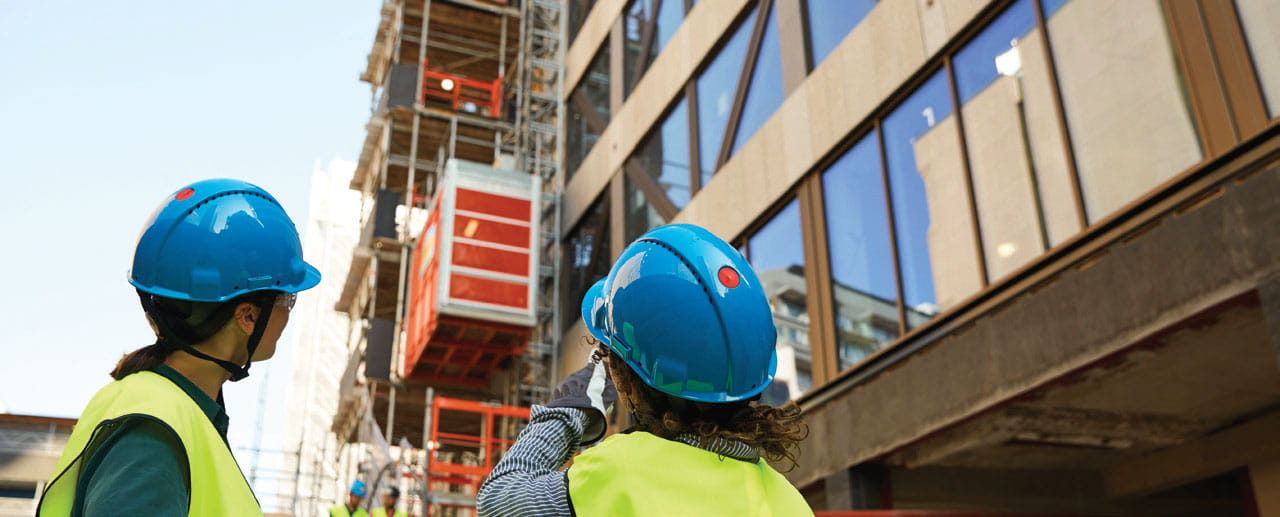Visioning session
Session duration: 1 – 2 hours
We’ll meet with your project lead, sustainability manager and a design team member to help define your project requirements and sustainability priorities.
In order to serve you better, please select your Enbridge Gas location services.
We noticed you are visiting from Utah, would you like to visit our Utah site?
Collaborative consulting firm EQ Building Performance Inc. helps project teams find opportunities to improve energy efficiency by performing energy modelling as part of the Savings by Design program. Energy Specialist Adam Barker reveals five key benefits of energy modelling.
EQ Building Performance Inc. helps project teams find opportunities to improve energy efficiency by performing energy modelling as part of the Savings by Design program.
Energy modelling helps you save energy and money and it’s a risk-free way to explore new technologies.


We always start by asking participants: what is your overarching goal with this project? Based on the building type and size and the goals of the project, we analyze the architectural, electrical and mechanical plans and boil it all down to, “Here’s where you’re doing well and here’s what could be improved.”
What energy modelling does extremely accurately is comparative analysis, such as comparing three or four different wall assembly options and seeing how they impact energy use—which is really difficult to do well without an energy model. That kind of comparison allows you to run a financial analysis to see which wall option is going to make the most sense for you.
We’re seeing more and more interest in top-of-the-line, highly efficient heating and cooling systems, such as geothermal and VRF (variable refrigerant flow) systems. Most project teams don’t have a whole lot of experience with those types of systems, but in terms of energy savings and utility cost savings, there can be a really big impact. Through an energy model, we can demonstrate that impact to project teams and explore how they can incorporate these systems into their base design going forward.
Energy modelling is great at showing that the devil’s in the details. If you’ve been using the same wall assembly for years, for example, you’re likely also using the same details: where a wall meets a floor, there’s a thermal bridge, and when you have 30 floors, it really adds up. There’s potentially a very low-cost solution to make that more efficient.
In order to perform an energy model, you have to run the building against weather patterns to see how much energy it’s going to use. Today, we can use predictive weather files, based on estimates of what the weather is going to be like in 2050. In Ontario, mechanical systems are focused on heating, but now with this approach we’re also seeing a need to focus on more—and more efficient—cooling, too.
One of the newer measures we can perform is called “passive survivability.” This involves simulating a power outage—turn off the power and see what happens to the building’s indoor temperatures over the course of a few days or a week. If you’ve got a building envelope that’s better at keeping out heat, the model will show that the indoor temperature will stay more livable in a heat wave during a power outage.
Savings by Design gives your project team free access to industry experts, technical tools and financial incentives to help you build high-performance, resilient and sustainable buildings.
Session duration: 1 – 2 hours
We’ll meet with your project lead, sustainability manager and a design team member to help define your project requirements and sustainability priorities.
No cost
Workshop duration: 1 day
Your team will strategize with energy modellers and sustainable design experts to maximize your project’s energy and environmental performance at a full-day workshop facilitated by Sustainable Buildings Canada.
An energy model will be developed as well as a final report summarizing the options discussed and recommendations.

* This has no cash value. To qualify for the program, projects must be located in the Enbridge Gas service area. City of Toronto and City of Ottawa projects will target the achievement of higher energy performance. Participants must agree to all program terms and conditions, fully participate in all stages of the program and meet all program requirements.
Disclaimers:
Projected energy savings , cost and benefits are based on energy modelling simulations conducted during the Savings by Design Integrated Design Process Workshop. These projections are specific to this case, and actual savings may vary for each project. Any references to Greenhouse Gas Emissions (GHG) reductions are based on the assumption that participation results in reduced natural gas consumption. Enbridge Gas does not make any claims regarding the specific amount of GHG reductions achieved.